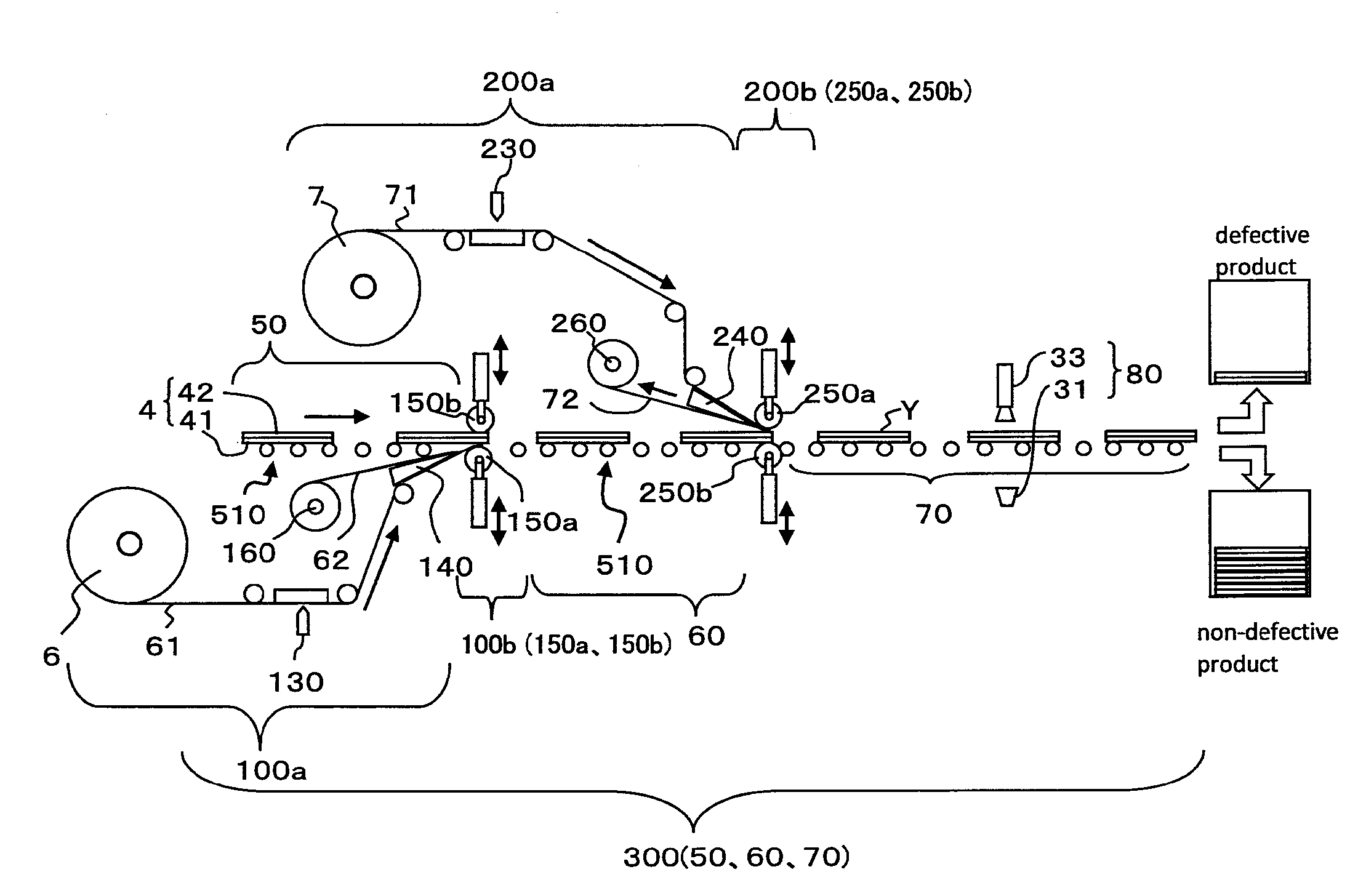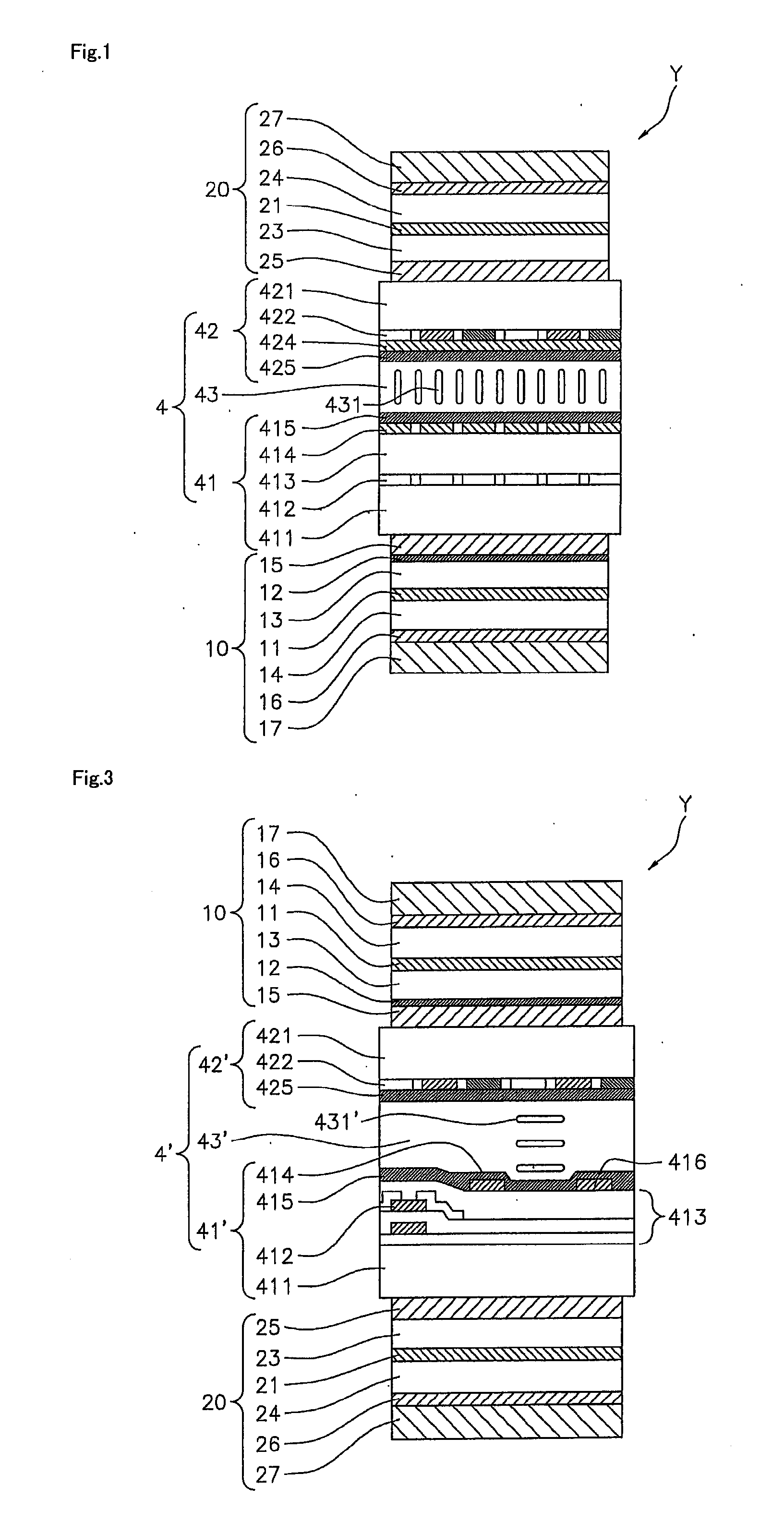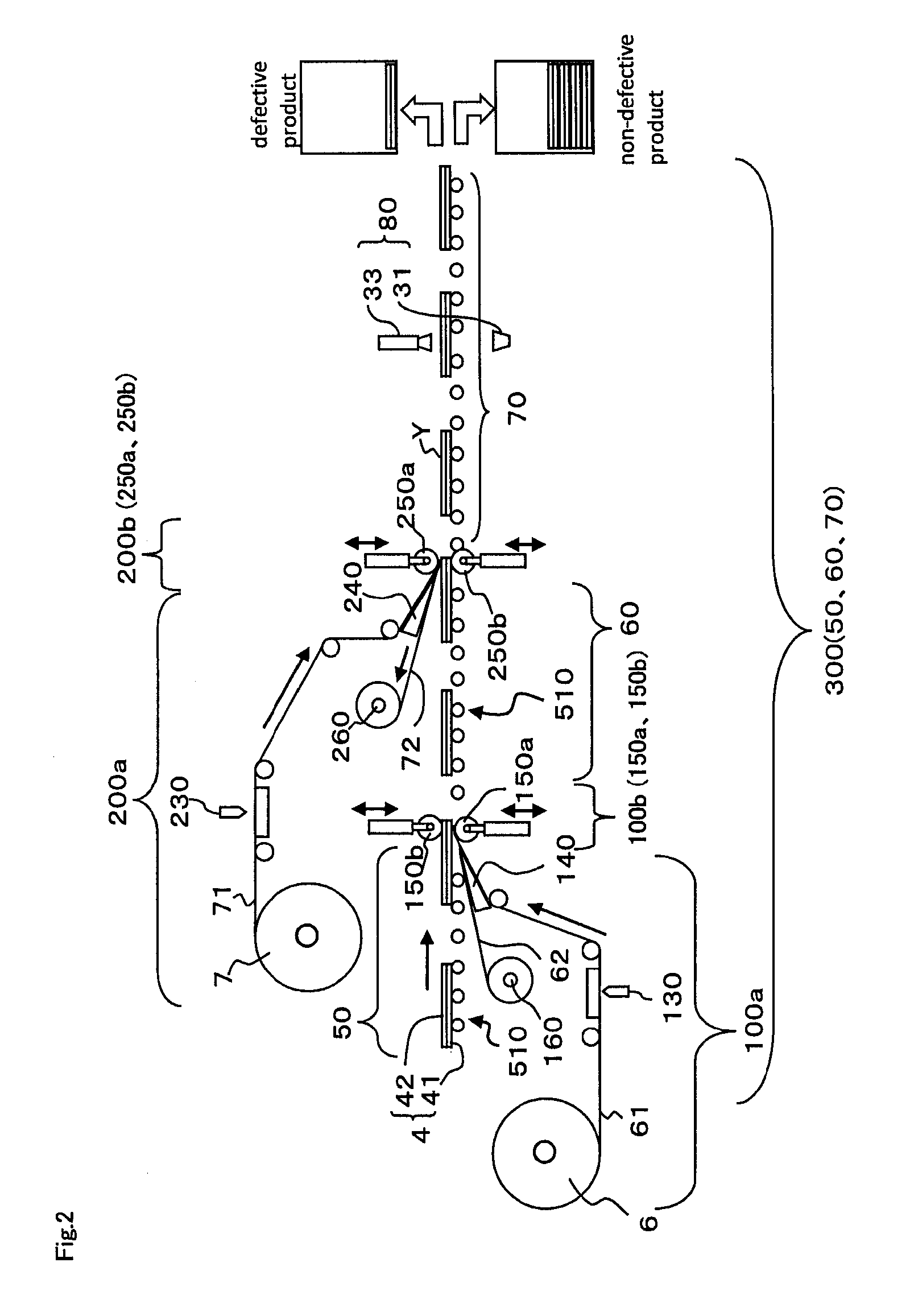Method for manufacturing liquid crystal display panels
a technology of liquid crystal display panel and continuous manufacturing, which is applied in the direction of lamination ancillary operations, instruments, chemistry apparatus and processes, etc., to achieve the effect of less more susceptible to electrostatic decay, and rapid attenuation
- Summary
- Abstract
- Description
- Claims
- Application Information
AI Technical Summary
Benefits of technology
Problems solved by technology
Method used
Image
Examples
embodiment 1
[0061]FIG. 1 shows a schematic cross-sectional view of a liquid crystal display panel Y. The liquid crystal display panel Y includes a rectangular liquid crystal cell 4 including a liquid crystal layer 43 placed between a pair of first and second substrates 41 and 42; a first polarizing plate 10 placed on the first substrate 41 side of the liquid crystal cell 4; and a second polarizing plate 20 placed on the second substrate 42 side of the liquid crystal cell 4.
[0062]Liquid Crystal Cell
[0063]In this embodiment, a vertical alignment-type (hereinafter referred to as “VA-type”) liquid crystal cell is used as the liquid crystal cell 4. The VA-type liquid crystal cell 4 is described below.
[0064]The first substrate 41 (hereinafter also referred to as the backside substrate) placed on the backside (backlight side) of the liquid crystal cell 4 includes a transparent substrate 411 of glass, plastic or the like; a circuit part that is provided on the transparent substrate 411 and includes a p...
embodiment 2
[0135]A description is given of a case where an in-plane switching (IPS)-type liquid crystal cell is used.
[0136]FIG. 3 is a schematic cross-sectional view of a liquid crystal display panel Y with an IPS-type liquid crystal cell.
[0137]In FIG. 4, the same elements are represented by the same reference characters as in FIG. 1, and a repeated description thereof will be omitted as appropriate. As shown in FIG. 4, an IPS-type liquid crystal cell 4′ is configured to have a liquid crystal layer 43′ placed between a pair of substrates 41′ and 42′ similarly to other liquid crystal cells. The display surface side substrate 42′ located on the display surface side of the liquid crystal cell 4′ does not have any electrically-conductive components such as pixel electrodes and a common electrode. In contrast, the backside substrate 41′ located on the back side of the liquid crystal cell 4′ is configured to have a common electrode and pixel electrodes for driving the liquid crystal layer 43′, so th...
example 1
[0152]The continuous manufacturing system shown in FIG. 2 was used. A first polarizing plate with a width corresponding to the long side of the VA-type liquid crystal cell was bonded to the liquid crystal cell (the first polarizing plate bonding step), and then the liquid crystal cell was horizontally turned by 90° and aligned. Subsequently, a second polarizing plate with a width corresponding to the short side of the liquid crystal cell was bonded to the liquid crystal cell (the second polarizing plate bonding step). In this manner, 2,000 liquid crystal display panels were continuously manufactured. The speed at which each polarizing plate was bonded and the speed at which the liquid crystal cell and the liquid crystal display panel were fed were 200 mm / second. The materials and apparatuses used were as described below. The surface resistance of the electrically-conductive layer contained as a part in the polarizing plate was measured according to JIS K 6911, 5.13. Specifically, th...
PUM
| Property | Measurement | Unit |
|---|---|---|
| thickness | aaaaa | aaaaa |
| thickness | aaaaa | aaaaa |
| thickness | aaaaa | aaaaa |
Abstract
Description
Claims
Application Information
 Login to View More
Login to View More - R&D
- Intellectual Property
- Life Sciences
- Materials
- Tech Scout
- Unparalleled Data Quality
- Higher Quality Content
- 60% Fewer Hallucinations
Browse by: Latest US Patents, China's latest patents, Technical Efficacy Thesaurus, Application Domain, Technology Topic, Popular Technical Reports.
© 2025 PatSnap. All rights reserved.Legal|Privacy policy|Modern Slavery Act Transparency Statement|Sitemap|About US| Contact US: help@patsnap.com



